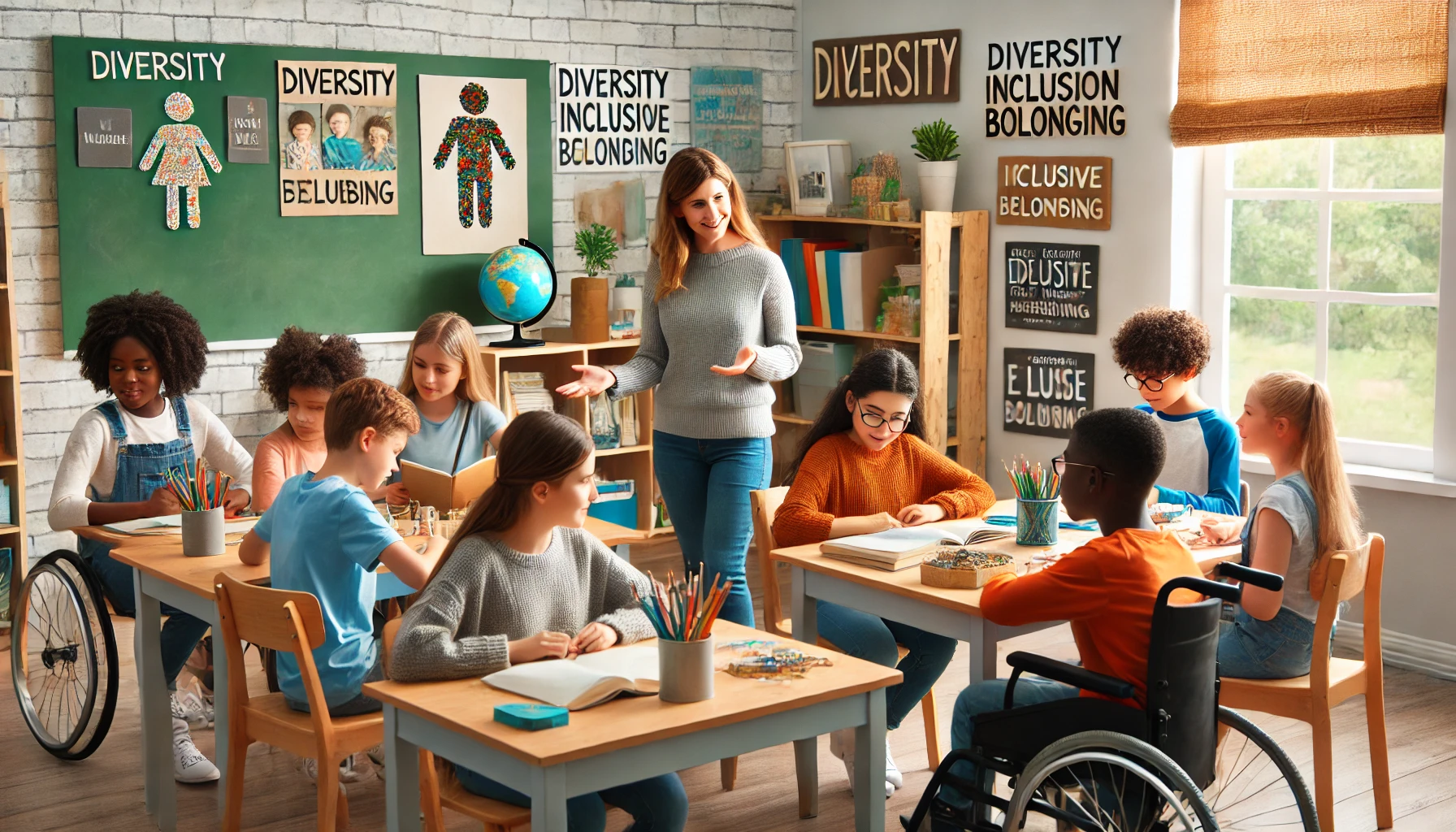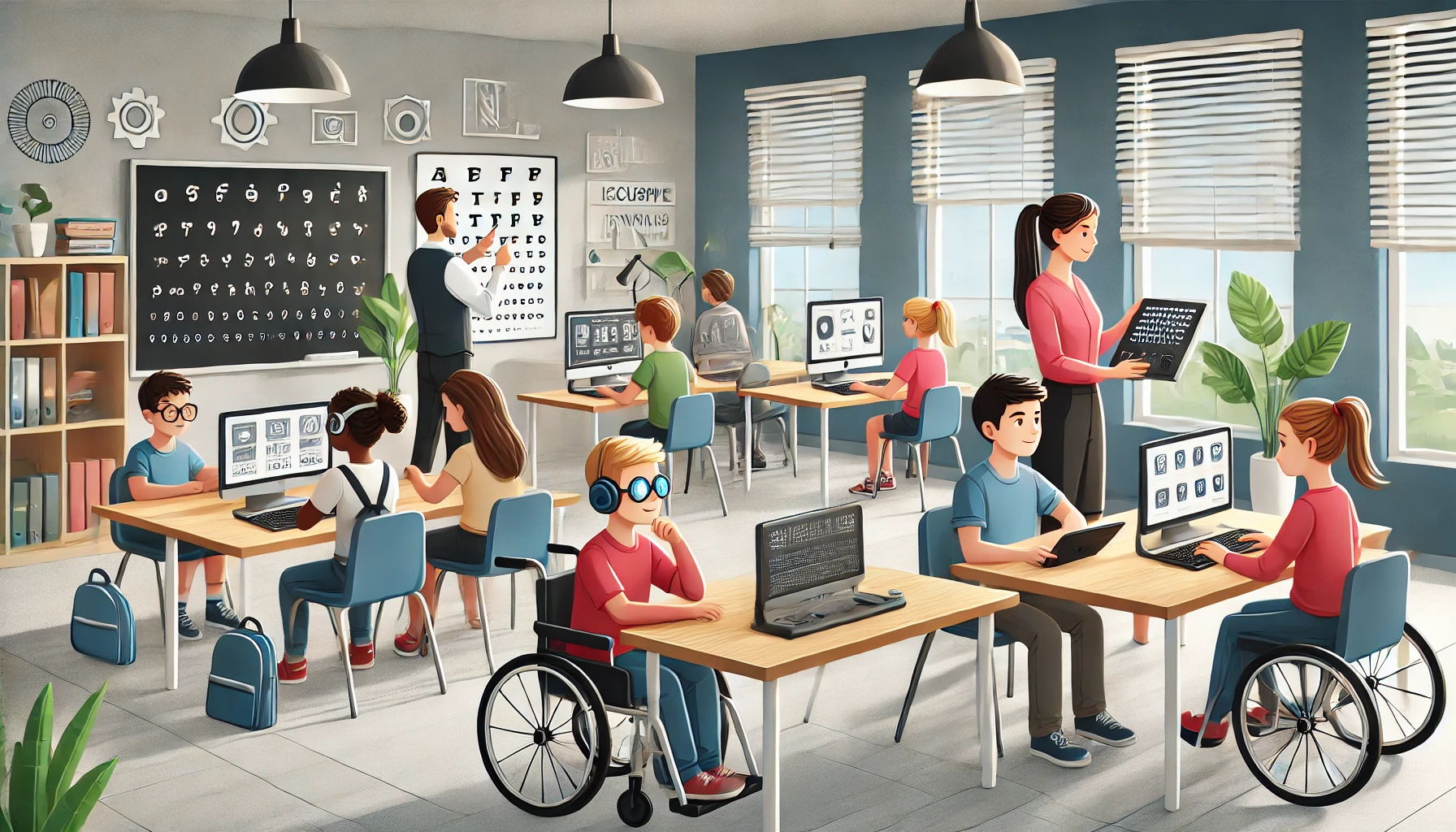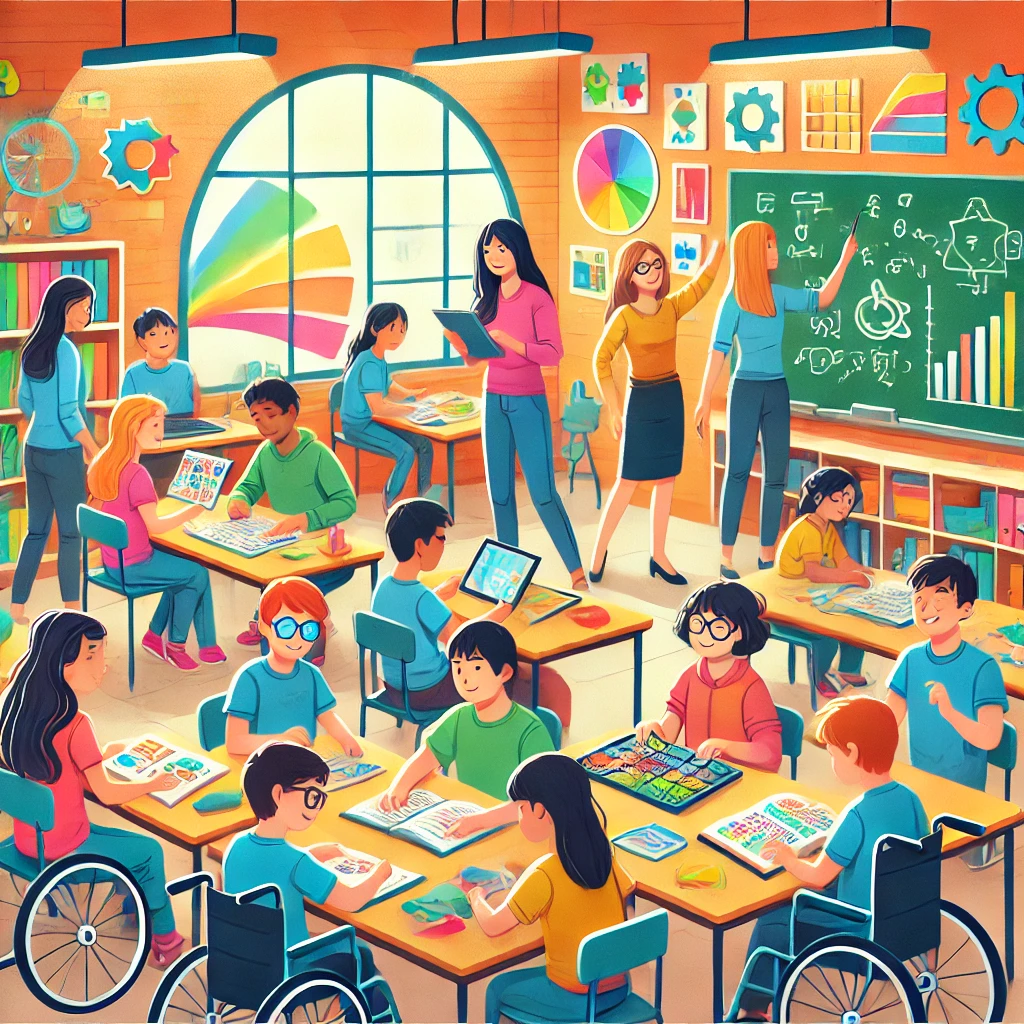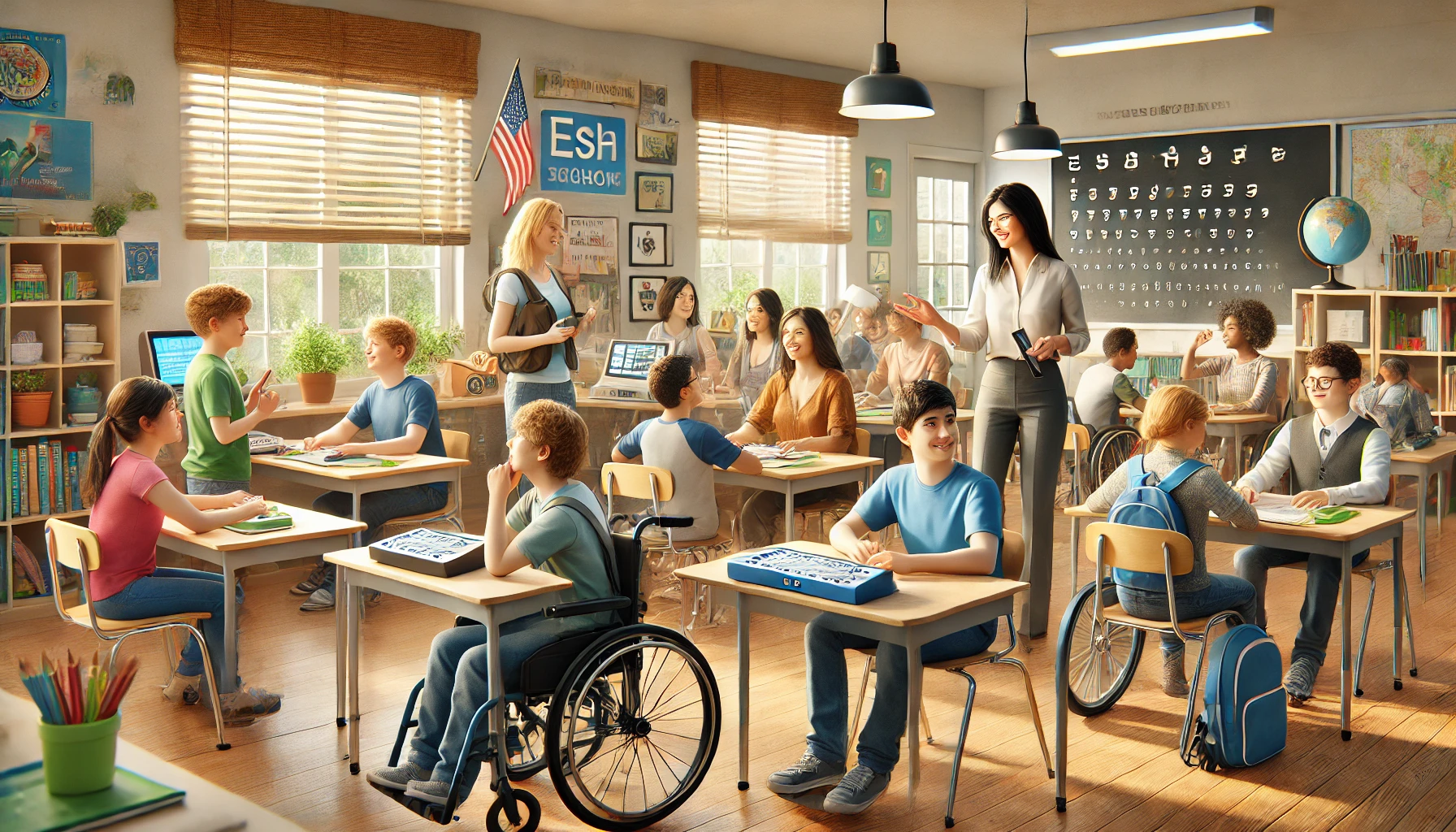Understanding Inclusive Education
Ever thought about how schools could make everyone feel like they truly belong? That’s where inclusive education steps in, shaking up the classroom in the best way possible for all kids, no matter their abilities or struggles.
Importance of Inclusive Education
Imagine a world where schools celebrate each kid’s uniqueness. That’s what inclusive education is all about, leveling the playing field so everyone gets a fair shot at learning. It’s like opening a door to a space where diversity isn’t just accepted—it’s the star of the show. By making schools more inclusive, every student finds their place, gets the support they need, and makes school life not only bearable but something they actually look forward to. It’s about being part of a group that cheers you on just as you are (Education Advanced).
Benefits of Inclusive Classrooms
Turns out, putting everyone together in one classroom does wonders—not just for the kids who need extra help, but for everyone. When all students learn side by side, they miss fewer classes, beef up their reading and math skills, and have better chances of heading to college or landing jobs after school. Plus, when you share a classroom with folks from different walks of life, it opens minds. Kids start tolerating differences better, walking with a bit more confidence, and they build friendships they might not have otherwise. This helps create a chill vibe where acceptance becomes the norm (Understood).
Teaching in these classrooms isn’t a one-size-fits-all gig. Teachers juggle different strategies that help every learner shine. It involves mixing up how lessons are taught—using things like the Universal Design for Learning and making lessons appeal to the senses so everyone finds something that clicks with them. This keeps students involved and turns the classroom into a place where differences aren’t shrugged off but are high-fived and applauded. It shows that everyone matters and has something to bring to the table (Understood).
If educators dive into the inclusive education pool, we’re looking at schools that thrive on unity, fairness, and the shared success of all its students.
Strategies for Inclusive Teaching
Creating a welcoming classroom where every student feels they fit in isn’t just a task—it’s an art. Teachers are the maestros, shaping spaces where everyone’s valued, no matter where they’re from or how they learn. Let’s chat about those strategies that make this happen.
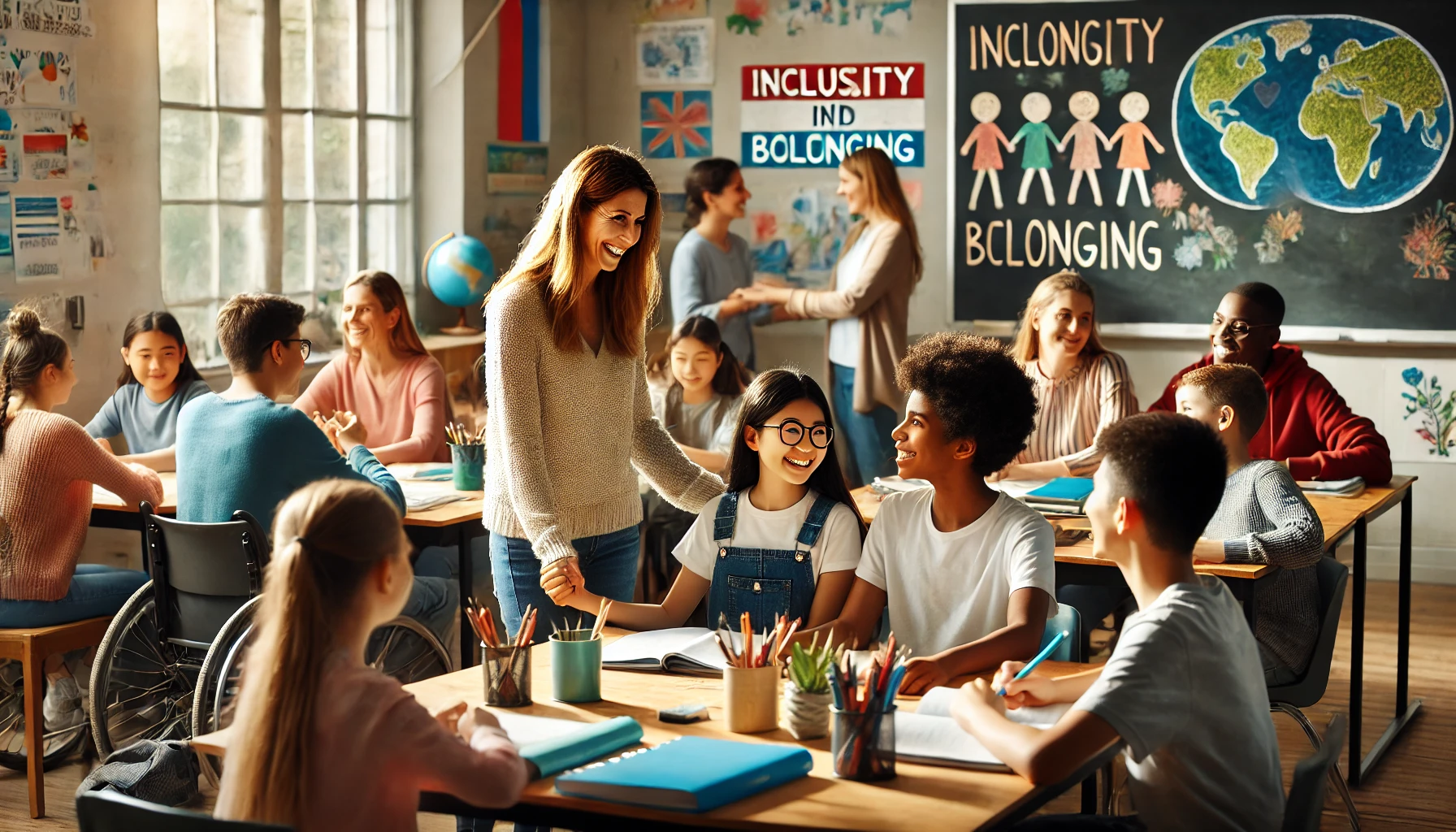
Teaching for Diversity
Recognizing that every kid brings a treasure trove of experiences to the room is just the beginning. When educators cherish these differences, they craft a learning space that’s as colorful as it is engaging. By blending various voices and experiences into lessons, classes become lively forums of mutual learning.
Teachers can connect with students by honing in on lessons that speak to different ways of thinking and backgrounds. This isn’t about singling anyone out—it’s about weaving everyone’s story into the bigger educational picture.
Teaching for Inclusion
Inclusion is more than just a buzzword; it’s about making students feel they’re truly part of the classroom family. When educators actively nurture a warm, supportive atmosphere, magic happens. Think team projects, think sharing sessions—kids collaborating and opening up to one another.
The goal is a classroom where students feel they can speak their minds, share their stories, and everyone listens. It’s this sort of vibe that turns classrooms into communities, where learning is both a shared and individual journey.
Teaching for Equity
Ensuring every student gets a fair shot is crucial to education. This means tackling those hidden hurdles holding some students back and setting up systems that offer everyone a fair chance at success.
Fair tests, extra help for those who need it, and speaking up for equal opportunities in policy are all part of the equity toolkit. With equity leading the way, classrooms transform into playgrounds of possibility where each student’s success is within reach.
In a nutshell, when educators focus on diversity, inclusion, and equity, they set the stage for a supportive environment that reaches every student. By joining forces with fellow teachers, looping in families, and standing up for inclusive values, classrooms become vibrant hubs of diversity and teamwork. So, let’s aim for a school where everyone’s story gets told and celebrated.
Creating Inclusive Learning Environments
Making sure every student’s needs are met in the classroom shouldn’t be some kind of magic trick. It’s all about adopting effective teaching tactics that make everyone feel included. Teachers who put this into practice can whip up a space that’s warm and supportive for students, no matter where they come from or what their abilities are.
Inclusive Teaching Strategies
You want all students to feel like they belong in the classroom, right? Inclusive teaching is key! It’s about making sure each student sees that classroom as a spot where they can learn, express themselves, and get some street cred—both personally and as part of the group. When teachers intentionally weave these practices into their methods, they help students view themselves as crucial parts of the learning scene. (CTAL – University of Delaware).
Variety spices up the classroom experience for everyone. Teachers who embrace diversity can boost inclusivity by shuffling in group work, discussions, and projects. These activities encourage students from different walks of life to work together and respect one another. Want to know more about this? Check out our piece on inclusive teaching methods.
Prioritizing Inclusive Excellence
Inclusive excellence isn’t just some fancy term—it’s a major goal that helps academic institutions build fair and accessible places for all learners. The University of Delaware is steering by example, making this a top priority. Their Center for Teaching and Assessment of Learning (CTAL) backs educators in creating learning spaces where everyone can succeed (CTAL – University of Delaware).
Putting inclusive excellence first means educators are all in on diversity, fairness, and a sense of belonging. Being this proactive doesn’t just help students with special needs; it builds a community vibe where everyone gets each other.
Educators should always be on the hunt for top-notch practices to ramp up accessibility and equity. Celebrate each student’s strengths and nurture an inclusive and equitable education scene. When teachers champion diversity and collaboration, they help students team up, learn together, and thrive in an environment that values differences.
By weaving inclusive teaching into everything they do, and focusing on making every student feel at home, educators aren’t just helping students who need a little extra—they’re making the whole educational experience richer for everyone. Encouraging teamwork not only builds skills but also fosters an atmosphere of understanding and respect.
Collaboration for Inclusive Education
When we’re talking about how to make education more inclusive, working together as a team is super important. All students—and especially those with different learning needs—benefit when teachers, parents, and everyone involved joins forces. Let’s break down why teamwork matters, how teachers can team up, and why parents and caregivers play a big part in this mix.
Teamwork in Education
Teamwork in education isn’t just about having students work in groups. It’s about creating a learning space where everyone gets the help they need. Teachers set the stage by teaching kids how to be team players and giving them chances to practice these skills, as highlighted in the Centre for Teaching Excellence, University of Waterloo.
Giving feedback is super important—it’s like the secret sauce that helps students get better not just in their studies but in life skills too. They learn to communicate, share, and understand each other better, prepping them for bigger things in life.
Collaborative Teaching Approaches
When teachers team up, magic happens. They bring together their different skills and make a plan that works for every student, including those who need extra help. This sharing of ideas makes the lessons richer and more engaging.
For teachers to work well together, they need to make decisions as a group, kick around ideas, and keep each other in the loop. This teamwork doesn’t just help students learn better; it also makes the whole school feel like a community where everyone respects and learns from each other.
The Role of Parents and Caregivers
You can’t talk about inclusive education without mentioning parents and caregivers. They’re like the bridge between school and home, making sure kids get what they need to thrive both places. Parents and caregivers are the real MVPs when it comes to understanding and speaking up for their kids’ unique needs.
When teachers and parents work well together, they build a support system that’s like a safety net for the kid—catching them academically, socially, and emotionally. Keeping open lines of communication, as mentioned by Herzing University, makes sure everyone’s on the same page, building trust and setting up a positive vibe that encourages successful teamwork.
The more we appreciate and leverage what each player brings to the table, the more inclusive our education system becomes—not just teaching kids, but gearing them up to succeed in all aspects of life. By teaming up, everyone involved can build a learning environment that empowers every student to do their best and shine their brightest.
Promoting Teamwork Skills
Picture a classroom where every student, with their unique needs, not only feels included but thrives through collaboration. That’s the beauty of promoting teamwork skills in inclusive education. By teaching teamwork, students become better at chit-chatting, tackling problems, and feeling like they’re part of the gang.
Why Teamwork?
Teamwork ain’t just about working together—it’s about building friendships and sharing responsibilities. When students team up, they learn the art of appreciating different viewpoints and contributions, making the whole group stronger and more united.
Communication Skills in Teamwork
Good talking skills are the secret sauce of any successful group. In teamwork scenarios, clear chat helps relationships bloom. Whether they’re sharing smart ideas or talking about feelings, communication keeps the wheels turning smoothly. Frequent and honest chats build trust, sort out disagreements, and make sure everyone’s ideas shine through.
Developing Problem-Solving Skills
Tackling problems is a biggie in any group setup. That’s why problem-solving is so important. Those who solve problems well bring creativity, smart choices, and grit when times get tough. Educators who push students to be inventive and team-oriented pave the way for them to boost their resilience and skill in finding solutions.
Through teamwork, students master the art of weaving through different viewpoints, chatting up a storm, and piecing together puzzles to reach a common success. By supporting teamwork in inclusive classrooms, educators empower students to flourish in a welcoming learning space.
Inclusive Classroom Practices
Creating a welcoming classroom where every kiddo feels like they belong and can learn is all about using smart strategies. It’s not a one-size-fits-all (let’s face it, who even likes those?) approach. Instead, teachers sprinkle in some magic using methods like Universal Design for Learning (UDL), embracing different learning styles, and pushing everyone to reach for those higher grades without making them lose their minds.
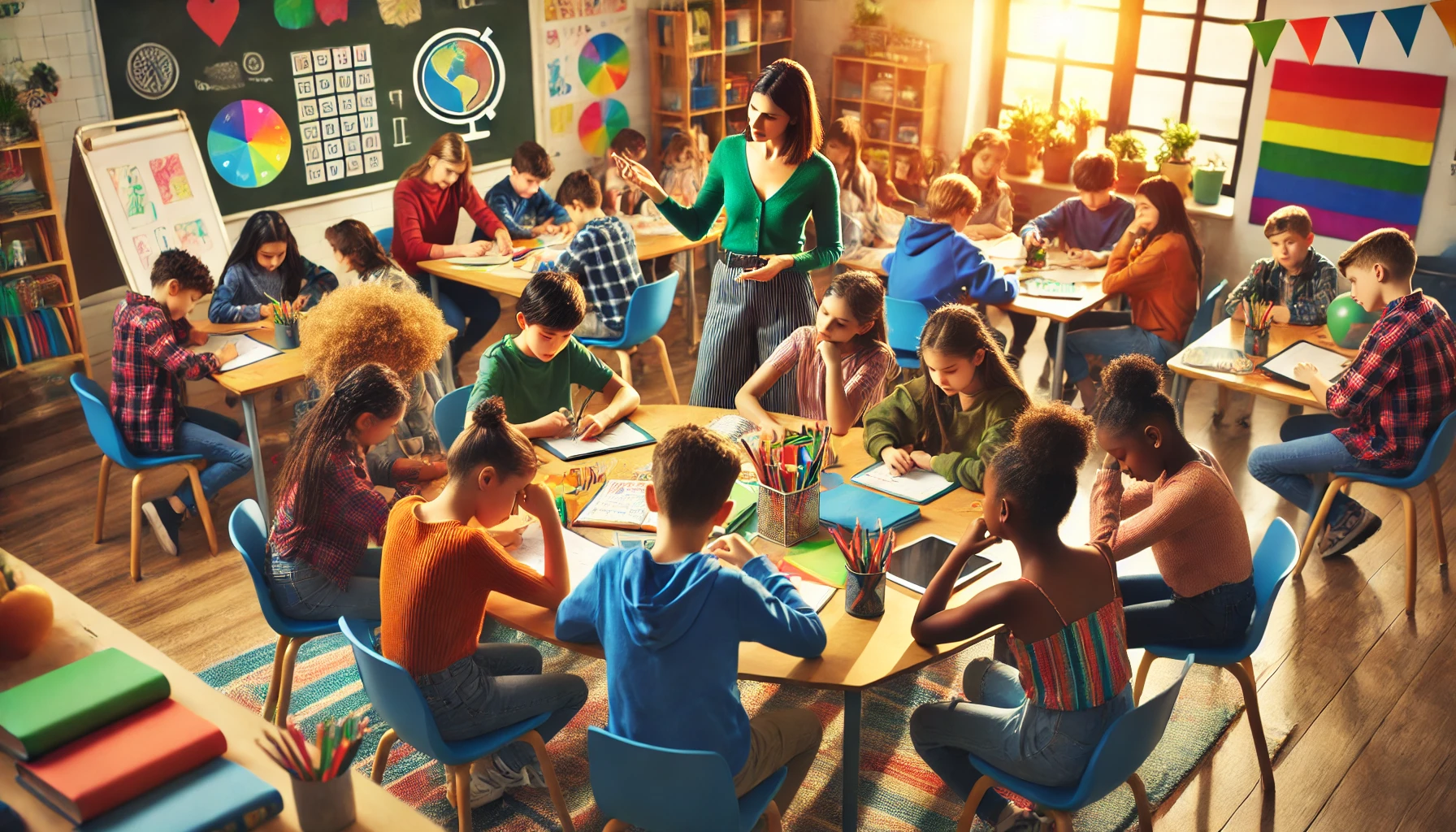
Universal Design for Learning
Ever thought about why everyone doesn’t learn the same way? That’s where Universal Design for Learning, or UDL, comes in handy. It’s like the Swiss Army knife of teaching methods. By using a mix of ways to show info, engage students, and let them share what they know, teachers make sure no student gets left behind. UDL turns any classroom into a cool place where everyone has a shot— whether they’re doodlers or daydreamers. Not only does it smooth the road for those who might struggle a bit, it jazzes up learning for everyone involved. For a deeper draft, hit up our piece on inclusive education resources.
Supporting Diverse Learning Styles
Let’s be real; we’re all wired differently. Some kids learn by watching, some by listening, and others by moving around (and climbing anything in sight). Teachers recognize this and keep their toolboxes stacked with various tricks to reach each student. Using everything from visuals to hands-on activities, they light up those learning bulbs for their students.
When teachers lean into these differences, everybody wins. Kids feel pumped when their way of learning is honored—cue the fireworks of achievement and confidence. Plus, when everyone’s differences are respected, the classroom becomes one cozy community. Hop over to our article on inclusive education best practices for more juicy tips.
Fostering Academic Expectations
Alright, now to the nitty-gritty of setting the bar high—because we believe every student can achieve greatness. Encouraging students to aim higher involves challenging work that doesn’t feel impossible. When teachers combine sky-high standards with a lending hand, kids find themselves in a space where hard work pays off.
With clear goals to reach for, students get motivated and start taking charge of their studies. In a classroom where reaching these goals is a group effort, everyone feels like they’ve got what it takes to succeed. Curious about how to set these lofty goals without breaking a sweat? We’ve got a detailed guide on inclusive education lesson plans.
By waving the flags of Universal Design for Learning, embracing different learning paths, and creating high yet attainable academic goals, teachers build classrooms where every student not only survives but thrives. Diversity isn’t just accepted—it’s celebrated, making every school day a little brighter.

